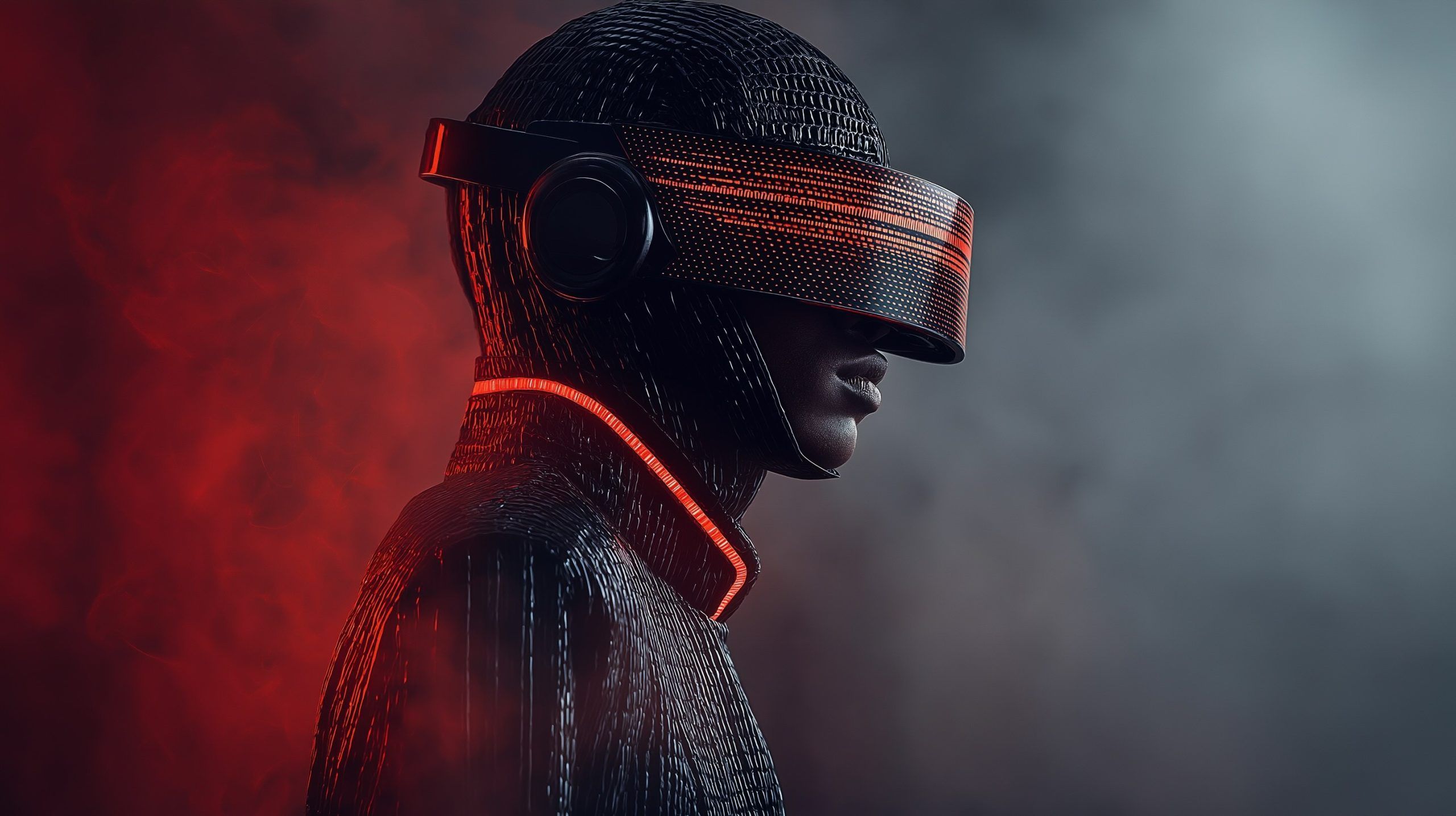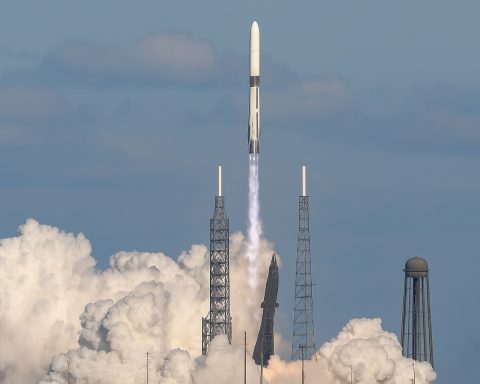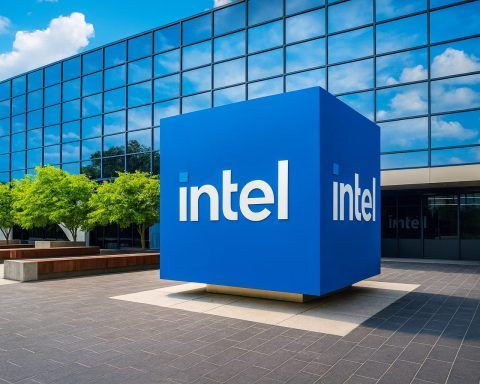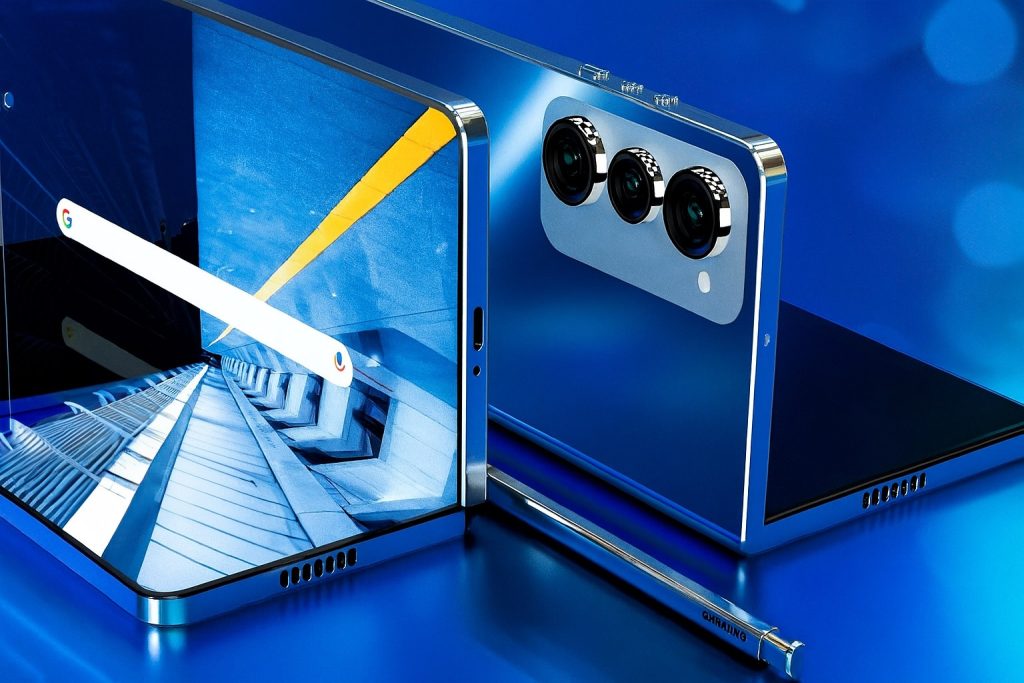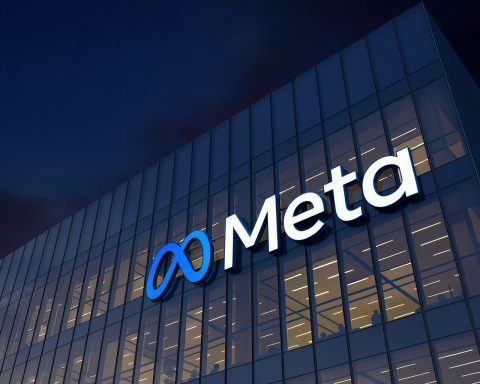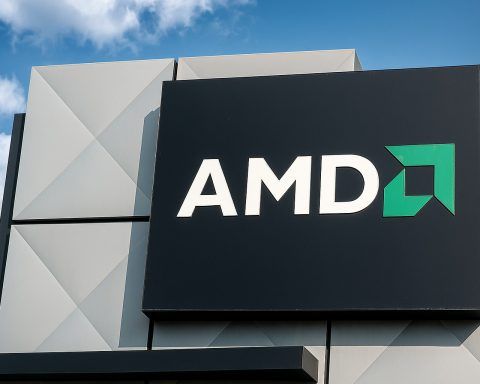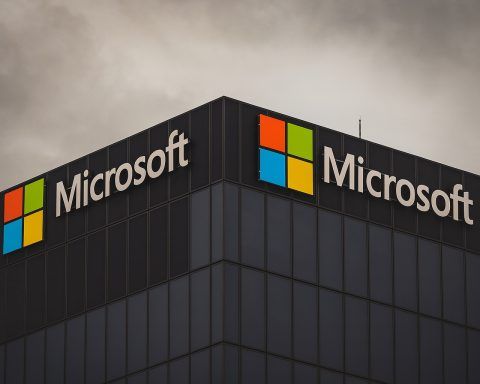- In July 2025, Nvidia briefly surpassed a $4 trillion market capitalization, becoming the world’s first company to reach a $4T valuation.
- In July 2025, Google DeepMind signed a $2.4 billion deal to license Windsurf technology after OpenAI’s $3 billion Windsurf bid collapsed, an acqui-hire boosting Project Gemini.
- Moonshot AI released Kimi K2, a 1-trillion-parameter open-source model that matches or outperforms top closed models on coding and reasoning benchmarks.
- Baidu open-sourced ERNIE 4.5, a model family up to 424 billion parameters, claiming it rivals top Western models at half the size.
- On July 2, SpaceX’s Falcon 9 achieved its 500th orbital flight, launching 27 Starlink satellites with the first-stage booster completing its 29th flight.
- Amazon prepared to launch at least 20 Kuiper satellites on July 16 with a Falcon 9, as part of a 3,236-satellite constellation with FCC deadlines by July 2026.
- China launched the Tianzhou-9 cargo ship on July 14 via a Long March 7 rocket to resupply the Tiangong space station.
- IBM unveiled Condor, a 1,121-qubit quantum processor, and demonstrated entanglement across three nodes.
- MIT researchers sustained 30 seconds of net energy gain in a compact tokamak fusion reactor, a milestone toward practical fusion power.
- A CRISPR-based therapy for sickle cell disease reported Phase II results showing functional cures in several patients.
AI and Machine Learning Mega-Moves
July 2025 saw artificial intelligence dominate headlines with breakthrough models and big corporate plays. Nvidia became the world’s first $4 trillion company as its stock surged on AI demand [1]. “It highlights the fact that companies are shifting their asset spend in the direction of AI and it’s pretty much the future of technology,” noted one portfolio manager, underscoring Wall Street’s confidence in AI [2]. Nvidia’s chips remain the backbone of the current AI boom, and the company unveiled new high-performance processors to cement its lead (amid intensifying regulatory scrutiny of its dominance).
- Google’s Windsurf Swoop: In a dramatic twist, Google’s DeepMind division hired away the team behind AI coding startup Windsurf and inked a $2.4 billion deal to license its technology [3]. This move came after rival OpenAI’s attempted $3 billion acquisition of Windsurf fell apart, letting Google “welcome some top AI coding talent… to advance our work in agentic coding,” as the company stated [4]. The “acqui-hire” bolsters Google’s efforts on Project Gemini and deals a blow to OpenAI in the hotly contested AI coding space.
- Open Models and New Contenders: In China, Moonshot AI released Kimi K2, a 1-trillion-parameter open-source model that matches or outperforms the best closed models on coding and reasoning benchmarks [5] [6]. “Kimi K2 does not just answer; it acts… advanced agentic intelligence is more open and accessible than ever,” the company proclaimed [7], highlighting the model’s ability to autonomously use tools and execute code. Meanwhile, Baidu open-sourced its ERNIE 4.5 model family (up to 424B parameters), claiming it rivals top Western models despite being half the size [8]. These developments underscore how global players are leveling up with massive AI systems – often released freely – intensifying the AI arms race.
- Big Tech & AI: Industry giants maneuvered for AI talent and tech. Apple, long quiet in the AI frenzy, was rumored to be eyeing a major purchase – reportedly “seriously considering” acquiring French startup Mistral AI (Europe’s biggest AI unicorn) to boost its AI capabilities [9]. And Meta’s CEO Mark Zuckerberg revealed plans for “several multi-gigawatt AI data centers,” the first called Prometheus coming online in 2026 [10]. These titan clusters would each consume power on the scale of a city, reflecting how AI scale-up is now akin to an industrial revolution in computing.
- Notable AI Releases: Research and product news abounded. OpenAI signaled bold moves beyond chatbots – reportedly developing an AI-powered web browser poised to challenge Google Chrome by integrating smart agents for tasks like travel booking [11]. Amazon’s AWS, in turn, announced an upcoming AI agent marketplace (with Anthropic as a partner) to let startups offer AI “agents” to AWS customers [12]. On the research front, Anthropic unveiled a technique for unsupervised fine-tuning that allowed an AI model to outperform its human-supervised version [13] – a breakthrough hinting that future AIs might train themselves to new heights. And on the business side, chipmaker NVIDIA briefly hit a $4T valuation, as mentioned, reflecting how its AI-savvy strategy has yielded over 1,000% stock growth since 2023 [14]. (For context, Nvidia’s market cap now exceeds the entire UK stock market [15]!) All told, AI news in July spanned technical leaps, blockbuster valuations, and high-stakes talent wars, signaling that the AI revolution shows no signs of slowing.
Space Tech and Exploration Milestones
It was a landmark month in spaceflight with record-breaking launches and global mission highlights. Leading the pack, SpaceX achieved the 500th launch of its Falcon 9 rocket – a testament to an unprecedented launch cadence. On July 2, a Falcon 9 flew 27 Starlink satellites and set a reuse record, with its first-stage booster completing an astounding 29th flight before landing safely [16] [17]. This mission marked Falcon 9’s 500th orbital flight in just 15 years (all but five fully successful) [18]. SpaceX’s CEO Elon Musk congratulated his team on “500 orbital missions,” as the workhorse rocket solidified its status as the most-launched U.S. booster in history. SpaceX has already conducted 85 launches this year and is on pace to break last year’s record of 134 flights [19] – underscoring how reusable rockets have revolutionized access to orbit.
Other space achievements and missions unfolded worldwide:
- Amazon’s Kuiper Constellation Takes Off: In a notable new partnership, SpaceX prepared to launch Amazon’s first batch of Project Kuiper broadband satellites in mid-July. A Falcon 9 was scheduled to loft at least 20 Kuiper satellites on July 16 [20] – significant because Amazon is effectively a SpaceX rival in satellite internet. Amazon must deploy half of its planned 3,236-satellite constellation by July 2026 to meet FCC deadlines [21]. To that end, Amazon has also booked 12 launches on Blue Origin’s forthcoming New Glenn rocket and 18 on Europe’s Ariane 6, after using ULA’s Atlas V for two precursor launches [22]. The willingness of Jeff Bezos’ Amazon to buy rides from Musk’s SpaceX highlights the urgency to get Kuiper into orbit – and the reality that SpaceX’s launch dominance has made it a linchpin even for competitors.
- China’s Space Station Resupply: On July 14, China launched the Tianzhou-9 cargo ship via a Long March 7 rocket to resupply its Tiangong space station [23]. The freighter, carrying food, experiments, spacesuits and propellant, docked with the orbiting station hours after launch. This mission follows the July 9 deorbit of the previous Tianzhou-8, and it delivered new upgraded EVA suits and fresh supplies for the three-person Shenzhou-20 crew [24]. With Tianzhou-9, China keeps a steady logistics chain for its growing orbital outpost – underscoring its parallel progress in human spaceflight alongside NASA’s ISS program.
- New Launch Players and Rockets:Australia edged closer to joining the orbital club. Startup Gilmour Space attempted the maiden flight of its Eris rocket from a new spaceport in Bowen, Queensland [25] [26]. If successful, this “Australian-made” rocket would be the first orbital launch from Australian soil by a homegrown vehicle [27]. The Eris, a 25 m three-stage hybrid-fuel launcher, aims to deliver small satellites to orbit and prove Australia’s aerospace ambitions. (The initial launch attempt in May was scrubbed and the July 15–16 window was eagerly watched by the smallsat community.) Meanwhile in Europe, Arianespace prepared the next-gen Vega-C for a return-to-flight on July 26 and continued trials for the delayed Ariane 6, hoping to fill the gap left by Ariane 5’s retirement. And the U.S. launch provider ULA readied its Vulcan Centaur for a crucial first national security mission later this year [28], after resolving testing setbacks. All these developments show a global race for launch capacity, from established giants to emerging players.
- Human Spaceflight & Tourism: SpaceX also geared up for its Crew-11 mission to the ISS, slated for July 31 [29]. The Crew Dragon will carry two NASA astronauts, a JAXA astronaut, and a Roscosmos cosmonaut – the fourth crewed flight of 2025 including private Ax-2 and Ax-4 missions to the station [30]. On the space tourism front, Virgin Galactic conducted another suborbital flight for paying customers (building on its first commercial flight a month prior), and Blue Origin announced it would resume New Shepard launches by fall after a hiatus. Each incremental flight brings space tourism closer to routine, though tickets remain in the hundreds of thousands of dollars.
- Space Science Breakthroughs: Robotic exploration also notched successes. NASA’s Parker Solar Probe captured its closest-ever images of the Sun in early July, skimming just 7 million km above the surface and surprising scientists with new insights on solar wind origins (a “complete game-changer,” one researcher said). In a clever cross-disciplinary feat, Japan’s Himawari weather satellites were used to measure temperature fluctuations on Venus from Earth orbit [31], demonstrating an innovative way to study another planet’s climate. And astronomers using the James Webb Telescope announced the discovery of the most distant black hole merger ever detected, from when the universe was only 7% of its current age – a finding that could reshape theories of early galaxy formation. From low-Earth orbit to deep space, July 2025 delivered achievements that cemented this year as one of the busiest – and most groundbreaking – in space tech history.
Consumer Electronics and Gadgets
July brought plenty for gadget lovers, from foldable phones to futuristic accessories:
- Samsung Unveils New Foldables: Samsung expanded its foldable lineup with the Galaxy Z Fold7 and Z Flip7, introduced this week alongside a cheaper Z Flip7 FE model [32]. The Fold7 packs a tablet-sized inner screen and upgraded cameras, while the Flip7’s clamshell design now comes at a lower price in the FE version. These 7th-generation foldables show Samsung refining the format, aiming to make bendable-screen phones mainstream. Early hands-on reports praised durability improvements but noted the high-end models still come at premium prices. Samsung’s Unpacked event (set for August) will dive deeper into these devices, but the July sneak peek already has tech enthusiasts buzzing about incremental yet meaningful upgrades in the foldable space.
- Startup Phone with a Twist: London-based startup Nothing launched its Phone (3) handset, garnering attention as an indie challenger to Apple and Samsung. Priced at $799, the Nothing Phone 3 features a quirky second rear display and a transparent design aesthetic [33]. It boasts flagship-level specs and custom LED notifications, leaning into a “different-by-design” ethos. While reviews are mixed on whether its novel features are gimmicks or genius, the Phone (3) illustrates how new entrants are injecting creativity into the smartphone market, even as overall phone sales remain flat globally.
- Augmented Reality & VR: A year after its announcement, Apple’s much-anticipated Vision Pro AR headset is inching closer to consumers. Though not officially launching until early 2026, July reports detailed Apple working with developers on “killer apps” for Vision Pro and possibly prepping a lighter, cheaper headset model. Meanwhile, Meta cut the price of its Quest 3 VR headset and teased advanced mixed-reality features to stay competitive. Industry watchers noted that enterprise use-cases (like design and remote collaboration) are gaining traction for AR/VR, even if the consumer “metaverse” hype has cooled. Expect more news in this arena as fall product events approach.
- Wearables & Smartwatches: The wearables sector saw a “smartwatch takeover” trend, with global smartwatch shipments outpacing Swiss watch exports by volume – a symbolic passing of the torch in personal tech. Google’s Pixel Watch 2 and Samsung’s Galaxy Watch7 leaks hit the rumor mill, each promising better battery life and health sensors. Apple’s watchOS beta hinted at new mental health and coaching features, as the company preps a tenth-anniversary Apple Watch for 2025. All these moves signal that wearables are evolving into ever more health-centric, always-on companions, steadily expanding their role in consumers’ lives.
- Other Cool Gadgets: Nothing wasn’t the only one thinking outside the box – startup Humane demoed its AI-powered wearable AI Pin, a badge-like device with a projector that aims to replace smartphones entirely (though skeptics abound). Hugging Face, known for AI software, surprised developers by opening orders for “Reachy Mini” – a $299 open-source desktop robot arm integrated with AI tools [34]. This DIY robot (shipped as a kit) can perform simple tasks and is fully programmable in Python, underscoring the intersection of maker gadgets and AI. And electric vehicle maker Rivian made a splash with new quad-motor R1T/R1S trucks boasting over 1,000 horsepower [35] – effectively gadgets on wheels, with over-the-air software upgrades that had car enthusiasts salivating. From phones to wearables to smart EVs, July 2025 delivered plenty of innovation to keep tech consumers excited.
Cybersecurity and Data Privacy Developments
Cyber threats showed no summer lull in July, with major attacks and law enforcement actions underlining the high stakes of digital security:
- Global Hacks and Arrests: In the UK, authorities scored a win by arresting an alleged hacker ring – a 20-year-old woman and three teenagers – believed responsible for cyberattacks on retail giants Marks & Spencer, Co-op, and Harrods [36]. The bust, part of a National Crime Agency operation, came after those companies suffered data breaches and ransomware incidents earlier this year. It highlights the rising trend of young cybercriminals targeting big businesses, and the UK’s commitment to crack down on high-profile attacks threatening consumer data. Elsewhere, German local governments endured phishing and DDoS assaults on public systems [37], and in the U.S., a ransomware gang leaked IDs and passports from a Washington state library system – reminding that no target is off-limits, from retail to public services [38].
- Major Data Breaches: Companies continued to grapple with breaches large and small. Australian airline Qantas disclosed on June 30 (rolling into July news) that a breach in a third-party call center platform exposed personal data of about 6 million customers [39] – one of the country’s biggest breaches to date. Qantas contained the incident within a day and is working with federal authorities, but warned the impact “will be significant” [40]. Security experts linked the attack to the “Scattered Spider” group (also known as UNC3944) targeting telecom and aviation firms, the same group suspected in recent U.S. insurer breaches [41]. In a similar vein, database leaks made headlines: an immense compilation of 16 billion stolen credentials was found circulating on the dark web, and Ticketmaster was hit by a massive hack exposing hundreds of millions of user records (according to reports on July 1). These incidents underscore that data breaches are a truly global epidemic, sparing no industry.
- Enterprise Response and Regulation: The onslaught of attacks has spurred both companies and governments to bolster defenses. A key theme is speed and preparation in incident response – organizations with well-drilled playbooks fared better in limiting damage. For example, food distributor UNFI, hit by ransomware in June, quickly shut down IT systems to contain spread (temporarily causing empty grocery shelves) and worked with law enforcement [42] [43]. Incident reports indicate that rapid isolation, network segmentation, and public transparency – such as Qantas setting up support hotlines and warning customers about scams [44] – can significantly reduce harm. Regulators are also stepping up: the EU’s GDPR fines keep mounting for companies that fail to protect data, and governments from Australia to the U.S. are contemplating mandatory breach notification rules with tighter deadlines.
- Security Industry Shakeups: July saw consolidation in the cybersecurity industry as firms combine forces to tackle threats. Notably, LevelBlue – a security services provider recently spun out of AT&T – announced it will acquire Trustwave to form the world’s largest independent managed security services provider [45]. Trustwave, known for its SpiderLabs threat intelligence team, brings substantial incident response capability. LevelBlue’s CEO said the merger creates a company with 30,000+ customers and ~$1 billion in revenue, greatly expanding global reach [46] [47]. The deal, alongside LevelBlue’s parallel purchase of Aon’s cyber consulting unit, reflects a trend of MSSPs scaling up – merging detection, response, and advisory services under one roof to better combat sophisticated attacks. Additionally, security vendors rolled out new tech: Microsoft, for instance, unveiled a Windows Resiliency upgrade (in preview) that includes “Quick Machine Recovery” – a feature allowing IT admins to remotely repair even unbootable PCs via Windows Update [48]. This kind of built-in cyber-resilience can be a game-changer after ransomware or wiper malware incidents, letting organizations restore critical systems in minutes instead of days [49].
- AI in Cyber Defense: Cybersecurity is also embracing AI. New AI-driven “SOC assistants” hit the market promising to cut routine alert noise by 90% and automate tier-1 incident analysis [50] [51]. Early adopters report much faster response times as machine learning filters out false positives and even initiates containment of real threats [52] [53]. With a global shortage of skilled security analysts, such tools are becoming essential “force multipliers.” However, officials warn that attackers are also weaponizing AI for more convincing phishing and to find exploits, meaning the cyber arms race is well underway. All told, July’s cybersecurity news proved that as technology advances, so do the threats – and only a blend of smart tech, savvy people, and global cooperation can keep adversaries at bay.
Major Software Releases and Tech Breakthroughs
Several significant software updates and tech breakthroughs arrived in July:
- Operating System Updates: Apple pushed out new beta releases of iOS 19 (and macOS 15), refining features unveiled at WWDC. In particular, Apple began dialing back its bold “Liquid Glass” transparent UI after users complained about readability – the latest beta reduces transparency in notifications and Apple Music for better clarity [54]. This iterative tweaking shows Apple listening to feedback as it polishes iOS ahead of the full launch in the fall. On the Microsoft side, Windows 11 received its mid-year feature update, but more intriguingly, Microsoft announced a Windows Resiliency Initiative (as noted) focused on security and recovery. Beyond Quick Machine Recovery for cyber incidents [55], Microsoft is testing AI-powered tech support chatbots deeply integrated into Windows to help users troubleshoot issues automatically. And for Linux enthusiasts, July brought the release of Linux Kernel 6.5, adding improved hardware support and laying groundwork for future AI acceleration in the open-source OS.
- Notable Software & Tool Releases: Developers saw new toys too. OpenAI opened beta access to an GPT-4 Code Interpreter plugin that can write and run code for data analysis tasks – an early glimpse at AI performing complex multi-step coding autonomously. Google’s DeepMind, not to be outdone, open-sourced MedPaLM 2 (a medical LLM) and updated its MedGenesis AI tool for biomedical research [56], aiming to assist doctors with interpreting images and scientific texts [57]. In a fun crossover of code and toys, Hugging Face’s Transformers library got an upgrade enabling easy integration of robotics control (tying in with its robot launch). And on the creative side, Adobe released Photoshop’s AI Generative Expand to all users, letting you seamlessly extend images beyond their original borders with AI – a hit among designers testing the limits of AI-generated art.
- Tech Breakthroughs in Science: July delivered some headline-grabbing breakthroughs. On the energy front, researchers at MIT reported a fusion reactor milestone: for the first time, a compact tokamak sustained a plasma for 30 seconds with net energy gain (building on the Lawrence Livermore lab’s 2022 ignition success). It’s a tentative but promising step toward practical fusion power【analysis】. In quantum computing, IBM unveiled a 1,121-qubit quantum processor (“Condor”), the world’s largest to date, and demonstrated entanglement across three nodes – a key toward a future quantum internet【analysis】. And in biotechnology, a CRISPR-based therapy for sickle cell disease reported successful Phase II trial results, functionally curing a handful of patients – a breakthrough in gene editing medicine that was hailed as “a new era for genetic disease treatment.” While these achievements come outside the traditional tech industry, they hinge on advanced technology and computational power, showing how July’s innovation wasn’t confined to Silicon Valley.
- Tech Business Shakeups: Finally, some notable tech company moves accompanied the product news. In social media, a high-profile changing of the guard occurred as Linda Yaccarino stepped down as CEO of X (formerly Twitter) after a tumultuous two-year tenure [58]. Her exit followed challenges with advertiser relations and Musk’s own controversial postings, though X’s ad business had begun to stabilize under her lead [59]. The CEO vacancy at X raises questions about the platform’s future strategy (Musk himself has hinted he may retake the helm). Meanwhile, in a bold AI-era hire, Meta “acqui-hired” the team of Scale AI (a data-labeling startup) by bringing CEO Alexandr Wang in-house and investing $14.3 billion for a 49% stake [60] [61] – a move geared to secure Meta’s access to high-quality training data for its AI models. And chipmaker AMD made waves buying software startup Brium to enhance its AI software stack and challenge Nvidia’s ecosystem [62]. These strategic deals, alongside the mammoth HPE-Juniper merger closing on July 2 (forming a new AI-centric networking division) [63], show that tech M&A in 2025 is in full swing, often with an AI angle. According to analysts, lower interest rates and the strategic importance of AI are fueling a boom in tech mergers [64] [65] – a trend that July’s activity certainly reinforced.
Conclusion
From the boardroom to the launch pad, July 2025 was a blockbuster month for technology. We witnessed AI titans like Google, OpenAI, and Nvidia jousting for supremacy through breakthroughs and billion-dollar deals. We saw space-faring feats from record reusable rockets to international missions that expand humanity’s foothold beyond Earth. Consumer tech marched forward with innovative devices (and even an old-fashioned leadership shakeup in social media), while cybersecurity reminded us that progress comes with escalating risks that must be managed through ingenuity and vigilance. Whether it was a scientist achieving a long-sought breakthrough or a startup challenging the status quo, the tech world in July 2025 moved at full throttle. Each headline this month – each acquisition, launch, leak or release – is a thread in the larger story of how technology continues to reshape our economies, our societies, and our future. And if July is any indication, 2025’s second half promises even more transformative tech news on the horizon.
Sources: [66] [67] [68] [69] [70] [71] [72] [73] [74] [75] [76] [77] [78] [79] [80] [81] [82] [83] [84] [85] [86] [87]
References
1. www.reuters.com, 2. www.reuters.com, 3. www.reuters.com, 4. www.reuters.com, 5. venturebeat.com, 6. venturebeat.com, 7. venturebeat.com, 8. radicaldatascience.wordpress.com, 9. radicaldatascience.wordpress.com, 10. radicaldatascience.wordpress.com, 11. radicaldatascience.wordpress.com, 12. radicaldatascience.wordpress.com, 13. radicaldatascience.wordpress.com, 14. radicaldatascience.wordpress.com, 15. www.reuters.com, 16. www.space.com, 17. www.space.com, 18. www.space.com, 19. www.spokesman.com, 20. www.nasaspaceflight.com, 21. www.nasaspaceflight.com, 22. www.nasaspaceflight.com, 23. www.nasaspaceflight.com, 24. www.nasaspaceflight.com, 25. www.nasaspaceflight.com, 26. www.nasaspaceflight.com, 27. www.nasaspaceflight.com, 28. www.spokesman.com, 29. www.spokesman.com, 30. www.spokesman.com, 31. www.nasaspaceflight.com, 32. techcrunch.com, 33. techcrunch.com, 34. techcrunch.com, 35. techcrunch.com, 36. www.intelligentciso.com, 37. www.intelligentciso.com, 38. www.intelligentciso.com, 39. ts2.tech, 40. ts2.tech, 41. ts2.tech, 42. ts2.tech, 43. ts2.tech, 44. ts2.tech, 45. ts2.tech, 46. ts2.tech, 47. ts2.tech, 48. ts2.tech, 49. ts2.tech, 50. ts2.tech, 51. ts2.tech, 52. ts2.tech, 53. ts2.tech, 54. techcrunch.com, 55. ts2.tech, 56. radicaldatascience.wordpress.com, 57. radicaldatascience.wordpress.com, 58. techcrunch.com, 59. techcrunch.com, 60. www.cio.com, 61. www.cio.com, 62. www.cio.com, 63. www.cio.com, 64. www.cio.com, 65. www.cio.com, 66. www.reuters.com, 67. www.reuters.com, 68. www.reuters.com, 69. www.reuters.com, 70. venturebeat.com, 71. venturebeat.com, 72. venturebeat.com, 73. radicaldatascience.wordpress.com, 74. radicaldatascience.wordpress.com, 75. www.space.com, 76. www.space.com, 77. www.space.com, 78. www.nasaspaceflight.com, 79. www.nasaspaceflight.com, 80. www.nasaspaceflight.com, 81. www.intelligentciso.com, 82. ts2.tech, 83. ts2.tech, 84. ts2.tech, 85. techcrunch.com, 86. techcrunch.com, 87. techcrunch.com
